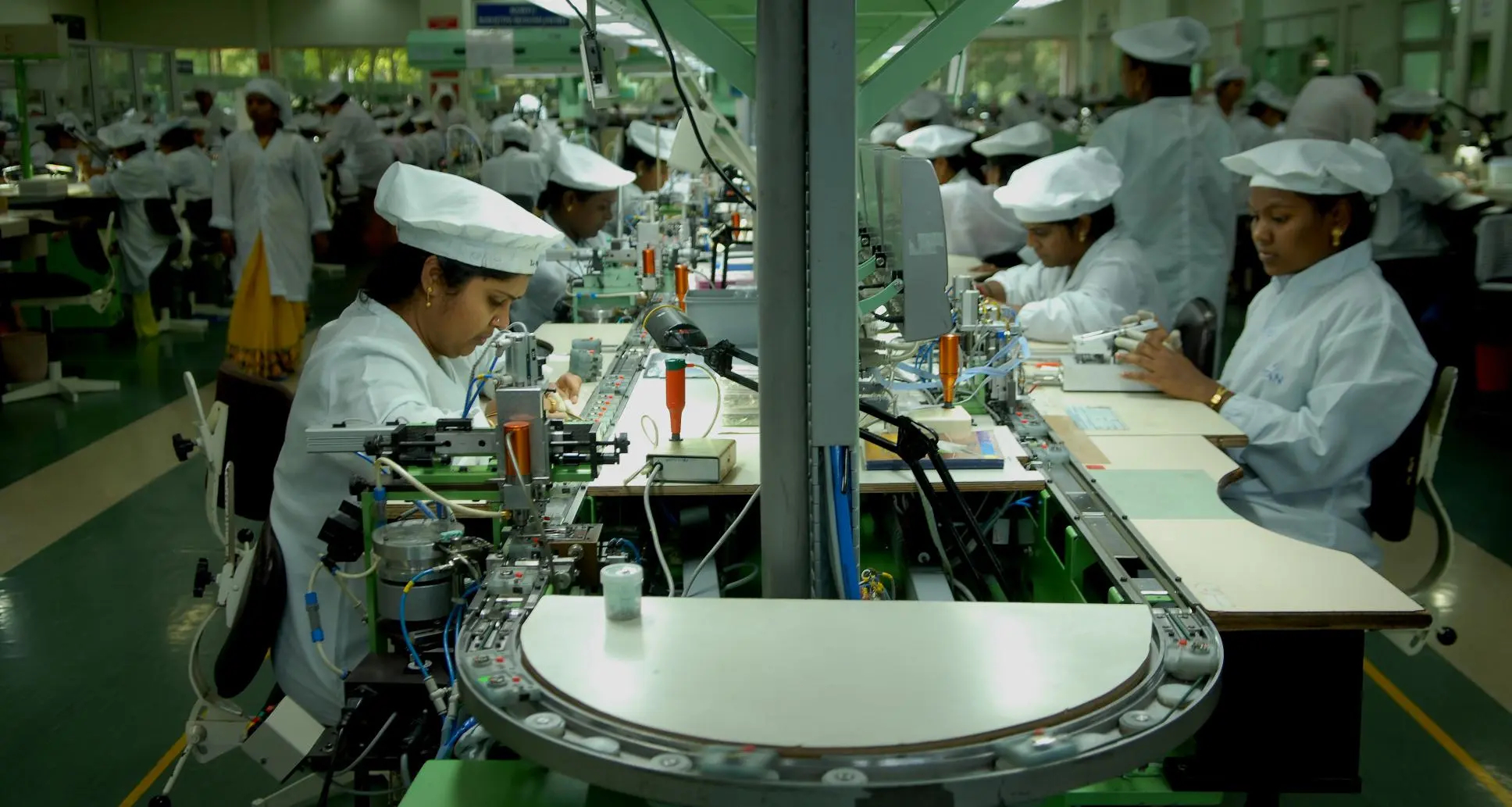Today’s India is calm and tranquil. India is also fast and ferocious. There is no contradiction here , it’s just that one needs to understand the context. India is no more just the back office of services but has broken the fabricated ceiling to storm into the corner office of manufacturing – the C- suite meant for top leaders.
Fast & Ferocious
India recently woke up to the good news that the combined Index of eight Core Industries Coal, Crude Oil, Natural Gas, Refinery Products, Fertilizers, Steel, Cement and Electricity increased by almost 8% in September 2022 as compared to the Index of September 2021. Not just that but India’s manufacturing activity was also very high demonstrating resilience despite global headwinds. While Nomura’s leading index of Asia’s aggregate exports showed a deepening downturn in Asia’s export growth, India’s seasonally adjusted New Export Orders Index is at its highest level since May.
It appears that the weakening trend in Asian exports had limited impact on India’s export orders.
The Airbus-Tata joint venture to manufacture C-295 aircrafts is another milestone in Make in India dream . It reaffirms Prime Minister Modi’s commitment to the military-industrialization process. For the first time a private partner has been chosen for manufacturing two-thirds of the contracted order in India and not a defence PSU as has been the case so far. Prime Minister is empowering both the defence PSUs and the private sector by giving opportunity to ‘Co-Design and Co-Create’ defence equipment.
A large scale military-industrial complex to design, develop, test and certify armed drones, fighters, tanks, and submarines is also on the anvil. In addition, industrial units manufacturing critical parts like infra-red seekers (needed for anti-tank missiles), inertial navigation system (for missiles and fighters) and hot engine technologies are being planned. This is to ensure that India does not have to depend on any third country for its military requirements. This will also allow India to export to other countries of the world without being bound by any technology transfer restriction or licenses.
Past to the Present
We know that the National Manufacturing Policy (NMP) 2011 announced during UPA encountered rough weather – establishing National Industrial Manufacturing Zones, creating SPVs and land acquisition posed challenges. The support from the government was merely restricted to Viability Gap Funding (VGF) and arranging for multilateral loans. Lack of budgetary provisions and innovative incentives led to the demise of ‘manufacture in India’ effort . The then Economic Advisors to the government who proclaimed ‘manufacturing is not for India’ unfortunately were proved right .
PM Modi’s ‘MAKE IN INDIA’ has a vision backed by strategy. 25 sectors are chosen and supported with investment, innovation, best in class manufacturing infrastructure, ease of business and skill development.
To provide a major boost to manufacturing, the Production-Linked Incentive (PLI) Scheme was launched for 13 sectors with an outlay of Rs 1.97 lakh crores.. This scheme is expected to make Indian manufacturers globally competitive, attract investments and cutting-edge technologies ; ensure efficiencies; enhance exports and make India an integral part of the global supply chain.
But achieving economies of scale and aggregating efforts needed a different thought process and a new way of working.
So an Industrial Information System (IIS) was developed. This aggregates information of industrial infrastructure across the country. IIS provides a GIS enabled database of industrial areas including clusters, parks, nodes, zones etc. across the country! It contains detailed information on 3500 industrial clusters, covering 4.8 lakh hectares from all States / UTs of the country. The database is meant to enrich state governments stakeholders, industrial park developers, industries and investors by providing updated information on the land available in different industrial parks, their potential, occupancy, incentives available et al. A one stop shop for investors.
Not satisfied with these efforts GOI is creating a Industrial Park Rating System (IPRS) to assess these parks on their performance to enhance the ‘attraction to invest’ quotient.
Confluence of all good things
Its providential that Industry 4.0 revolution was totally at play when Make in India and ‘Atmanirbhar Bharat’ were announced by PM Modi.
Today, thanks to Industry 4.0 and availability of disruptive technologies like AI( Artificial Intelligence ), Robotics , IOT and cloud computing, Indian manufacturers are able to leverage data from multiple sources – connected machines, equipment, IoT sensors etc to transform their existing manufacturing processes . Five centers set up at Pune, IIT (Delhi) at IISc, CMTI Bengaluru and IIT Kharagpur are helping the industry adopt these technologies.
Today by digitalizing the shop-floor, MSME manufacturers are getting instant analysis of production status, errors , operational efficiency, quality and reporting process. The real-time analysis of production through visualization tools is giving them a new perspective of the manufacturing process, better insight into the machinery, personnel and the process efficiencies. Digital documentation is eliminating the errors providing a digital ‘approval’ hierarchy for an efficient process. These are helping Indian manufacturers save time and reduce expenses. As a result today , our Indian products are more competitive in the Global market.
At one time India was in awe of WCM (World Class Manufacturing) TQM, Six SIGMA and Zero Defect manufacturing et al but the same country today is deploying disruptive technologies like the AI with ease. The smart prediction algorithms are being used by Indian factories for maximizing equipment efficiency, predictive maintenance of machinery resulting in high quality products – for India and for the world.
NAY vs YAY sayers
The former governor of the Reserve Bank of India, Raghuram Rajan recently cautioned India that a manufacturing-led export model is detrimental for the nation and it’s better to continue the ‘services – led’ growth. Au contraire and sadly for him Dun & Bradstreet’s latest report confirms that India will realize the target of 25% share of manufacturing in overall economy by 2025.
The Finance Minister Nirmala Sitaraman recently disclosed that during her IMF & World Bank meetings in Washington D.C., people felt that India seems to be an oasis of ‘stability and calm’ – and that the challenges are being carefully firewalled by the country.
Indian economy now is very clearly attractive for investors because of careful planning, targeted facilitation, fiscal prudence and a clear understanding of what works for the country. We are indeed poised to ‘Make in India for the World’.
A random stone of advice thrown by a former RBI governor can hardly create a ripple in a country that today is an oasis of stability and calm. We know it and so does the world…
Karuna Gopal Vartakavi is the president, Foundation for Futuristic Cities and BJP National Incharge, Women Policies & Research













